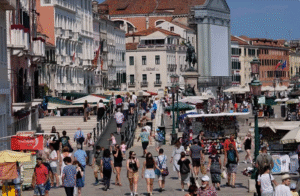Surge of human trafficking in Goa blamed on tourism

PANAJI, India – The tourism industry in the state has directly or indirectly contributed to the surge in human trafficking rackets in Goa.
The recent report on human trafficking in India by the United Nations conventions against transnational organized crime (UNTOC) says, “Demand for sex services by the tourists has led to an upsurge of trafficking rackets operating in the state.” The victims who have been forced into the sex trade are smuggled into Goa even from across international borders, the report says.
Based on data procured by a Vasco based non-government organization, ARZ, which works closely with trafficked women, the UNTOC report says some girls and women working as sex workers in Goa, have been brought from Nepal, Bangladesh and Russia.
The data collected for the years 2009 to 2012 showed that 146 victims of trafficking were of Indian origin and 33 were foreigners. Of the foreigners, 27 were from Nepal, four came from Bangladesh and two were Russian nationals.
Regarding girls trafficked from within India, 39 came from Mumbai, 31 from Manipur, 14 from Andhra Pradesh, eight from Nagaland, seven from Karnataka, five each from Maharashtra and Assam, four from Mizoram and 16 were locals.
The report says that at times the girls are lured to Goa with the prospects of a better job. In 2010, 11 girls from the North East, who had been trafficked and been forced into the sex trade were rescued in Goa.
The report says after brothel based activities were stopped in 2004 as a number of brothels along Baina beach were demolished, the trafficked women extended their activities elsewhere. The brothels now operate in the guise of beauty parlours, spas, escort services, friendship clubs and also offer their services through the internet, the report says.
Throwing light on how the scope of prostitution has expanded, the report says sex work and trafficking has also been reported among the Lamani tribals, a migrating community from Karnataka and Maharashtra, who are regular visitors to Goa and arrive in the state at the beginning of the season every September.
The report also says that children of the Lamanis are in the high-risk group who fall into the trap set up by the tourism trade in Goa. The report says Lamani children are easy prey most of the time as they are not always accompanied by their parents. They are exploited and pushed into the sex trade, the report says.
Another angle explored in this study is that of the Russian mafia in Goa. The report says the Russian mafia is not only involved in real estate deals and the drug trade but has also extended its tentacles into the flourishing flesh trade. Young Russian, Yugoslavian and Romanian girls, sometimes minors, are trafficked into Goa, the report says.
It also says that business conferences and commercial events have emerged as a new front for flesh trade, with girls from various states being trafficked specially for these events in Goa. This is a new phenomenon in which girls are recruited through event management agencies by the companies holding their conferences in Goa. Source: TNN
















